All About Handheld Loupes
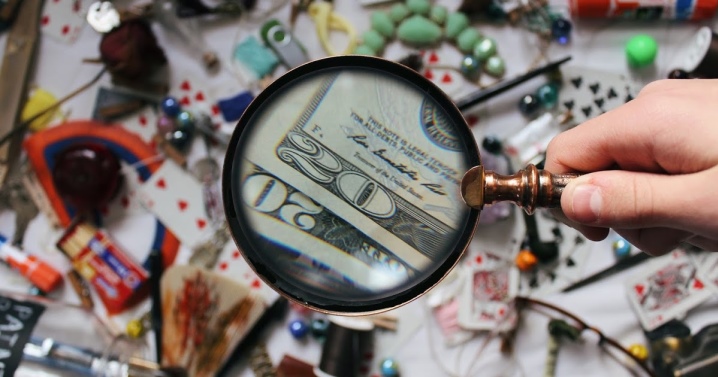
One of the most important devices for biologists, jewelers and scientists, as well as people who have poor vision, is a magnifying glass. There are many varieties, but the most popular is manual.
A handheld magnifier is a simpler device than a microscope or other sophisticated magnifying devices. The options for its purpose are very diverse, because the device is used in many spheres of society.

Peculiarities
Unlike a tripod magnifier, a hand-held researcher holds in his hands. It can be rotated to any angle, which is very convenient. However, the magnification of the handheld is not as strong as that of the tripod.
The handheld magnifier consists of a handle, a magnifying lens and a frame. In the budget version, plastic is used in the manufacture of pens and frames, in the more expensive - metal. Magnification options for a handheld magnifier from 2x to 20x. Using a handheld magnifier is easy. It must be picked up and focused on the subject, moving closer and further away from the object in question.


Lenses in magnifiers are small (pocket) and quite large. There are many other types of magnifying glasses. Technology is advancing today and the functionality of optical devices is expanding and improving.
The most popular brands are Levenhuk, Bresser, Kenko other. Magnifiers are made from quality materials. Some of these designs are truly unique.


Let us consider in more detail the main parts of the structure of this item.
- Magnifying lens. The surfaces of both sides of the lens are curved outward. The light rays that pass through the lenses are collected at a focal point. This point is located on either side of the magnifying glass. The distance from the center to this point is called the focal point. It ranges from 20 to 200 mm. The magnifier optics system can be composed of one or more lenses. There is a magnification mark on the frame, for example 7x, 10x, 15x. It shows how many times the object approaches the eye.
- A pen. It can be straight, curved or foldable.
- Frame. The modern design of the magnifier can be performed even without a rim. This is done so that it does not interfere with the view. Such a magnifier looks like a lens with a handle attached to it, and a backlight is built in at the point of contact.
- Backlight. For the illumination of magnifying devices, fluorescent or LED lamps are used, which serve for a long time and without failure.
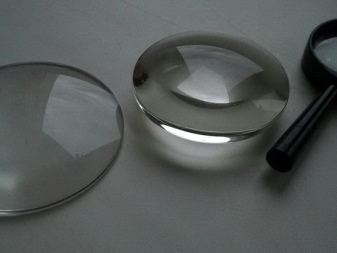

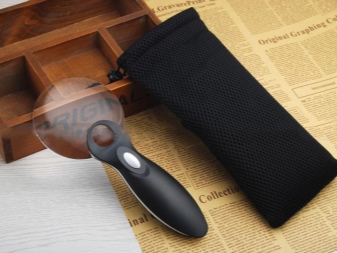
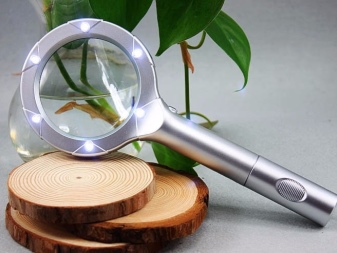
How did the magnifying glass come about? Antonio Leeuwenhoek is considered its inventor. He spent all his free time on various experiments with magnifying glasses. At that time, they were weak and did not increase significantly. Then he came up with the idea of creating a magnifying glass. He began grinding glass and was able to achieve a magnification of 100 times. Through such lenses one could see various, very small objects. Leeuwenhoek loved to observe insects, looked at the petals of plants and bees. In the process, the inventor sent letters describing his research to the Royal Society in England. His discovery was recognized and confirmed on November 15, 1677.

Application
Handheld magnifiers are an integral part of many professions. Depending on the scope of use, its structure is slightly different.
For example, magnifier for numismatists completely in a metal case. It should have a 30x magnification, 2 LED flashlights and one with UV, which are located on the handle near the lenses. There is a place for batteries inside.

With an ultraviolet flashlight, you can determine the authenticity of banknotes and the presence of prints. LED flashlights are needed for good illumination of the subject under study. They allow you to see the entire relief, the smallest scratches and microcracks on the coin.

In the watchmaking profession, despite the use of forehead magnifying glasses, there is always a handheld magnifier at hand. The complex and delicate assembly of the watch mechanism requires increasing in different magnifications.

And also there is a need for handheld loupes in professions such as biologist, jeweler, archaeologist, scientist, art critic, restorer, forensic investigator, cosmetologist, physician and many others.
Many have read fascinating stories about Sherlock Holmes. His main tool, which he never let go of his hands, was a hand-held magnifier. It is still kept in the Sherlock Holmes Museum in London.

In the field of modern forensics A magnifying glass is an essential tool for examining a crime scene. Of course, forensic devices are different from home options. They are complex mechanisms of different configurations, magnifications and sizes.

Varieties
Loupes are divided into several categories.
There is special ruler magnifiers, with the help of which you can select a whole line of a book or make a bookmark in the right place. They enlarge the font 3-5 times.
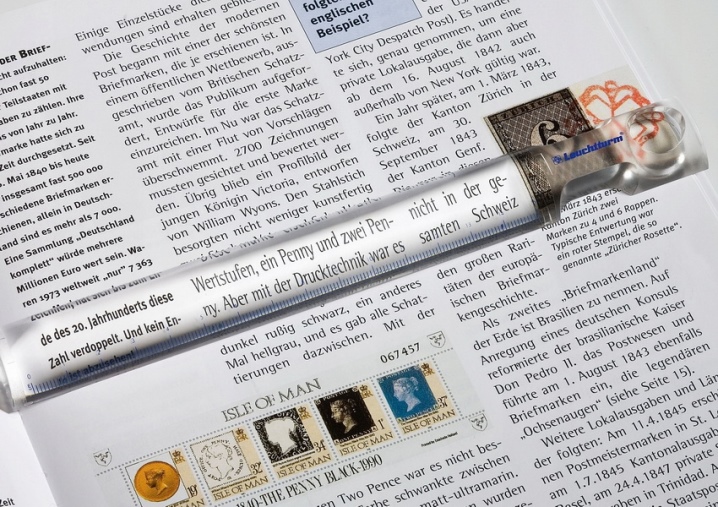
They are convenient to use at home and on the road.
There is a measuring magnifier. It includes a scale for measuring. Used in the engineering field, it has a significant magnification ratio, allows you to magnify an object up to 10 times.

Solves a wide range of problems in the repair of mechanisms, drawing up diagrams and depicting devices.
There is a magnifier specifically for reading text or looking at small pictures. It can be not only round, but also square, which is very convenient when reading books. Can be used not only at home but also on the road. The lenses in it allow you to transmit a clear image.

It has a very comfortable handle and a small frame.
Grain magnifier used to clean seeds and determine their quality. Unlike other models, it has a special rim that does not allow the objects in question to crumble.

Textile magnifier It is used in the textile industry to detect defects in fabrics and their density. Most often it is quite large and has a foldable body.

Hourly magnifiers used in workshops. They are very small in size but have a strong magnification. This is necessary in order to examine the smallest mechanisms of the watch.
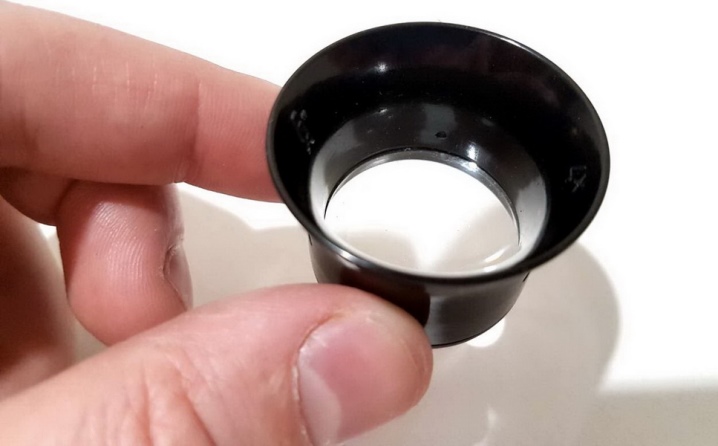
Exists special magnifiers that are used to view frames from film.

Now they are practically not produced, because film cameras have long been out of use.
Pocket magnifiers are often used in everyday life and are in great demand. For example, in a store, when it is difficult to read the small print.

To free your hands handheld magnifiers have moved to a kind of mounts in the form of tripods. Tripod and table magnifiers are an essential tool for those working with small objects.

How to choose?
Before deciding on the choice and purchase of a magnifying glass, you need to evaluate what you will be using it for. Reading, crafts, working with small objects, exploring and evaluating art and jewelry all require the use of loupes with different magnifications.
- It is important to consider the material of the lens. If it is glass, then there is a possibility that it could break if dropped. These lenses are best used in places where glass shards will not harm. That is, in a house where there are small children, you should choose a magnifier with a plastic lens. However, plastic also has disadvantages. It scratches easily and loses its properties. Polymer acrylic is the most popular material. It breaks less often and scratches less.
- Consider how much magnification you need. Magnifiers are used to magnify objects, texts and images.It is the degree of increase that is an important indicator. It is expressed in diopters. The larger, the larger the subject that we will be examining. But here it is important to consider the focal length. It is worth choosing such a power that this indicator does not limit anything during operation.
- The backlight always comes in handy.
- The design of the magnifier will vary depending on the activity for which it is needed.
- Color is not that important, but it is also a criterion to consider. Black or white loupes are the most popular, but can be made to order in any other color and design.


For an overview of Levenhuk Zeno magnifying glasses, see the next video.













The comment was sent successfully.